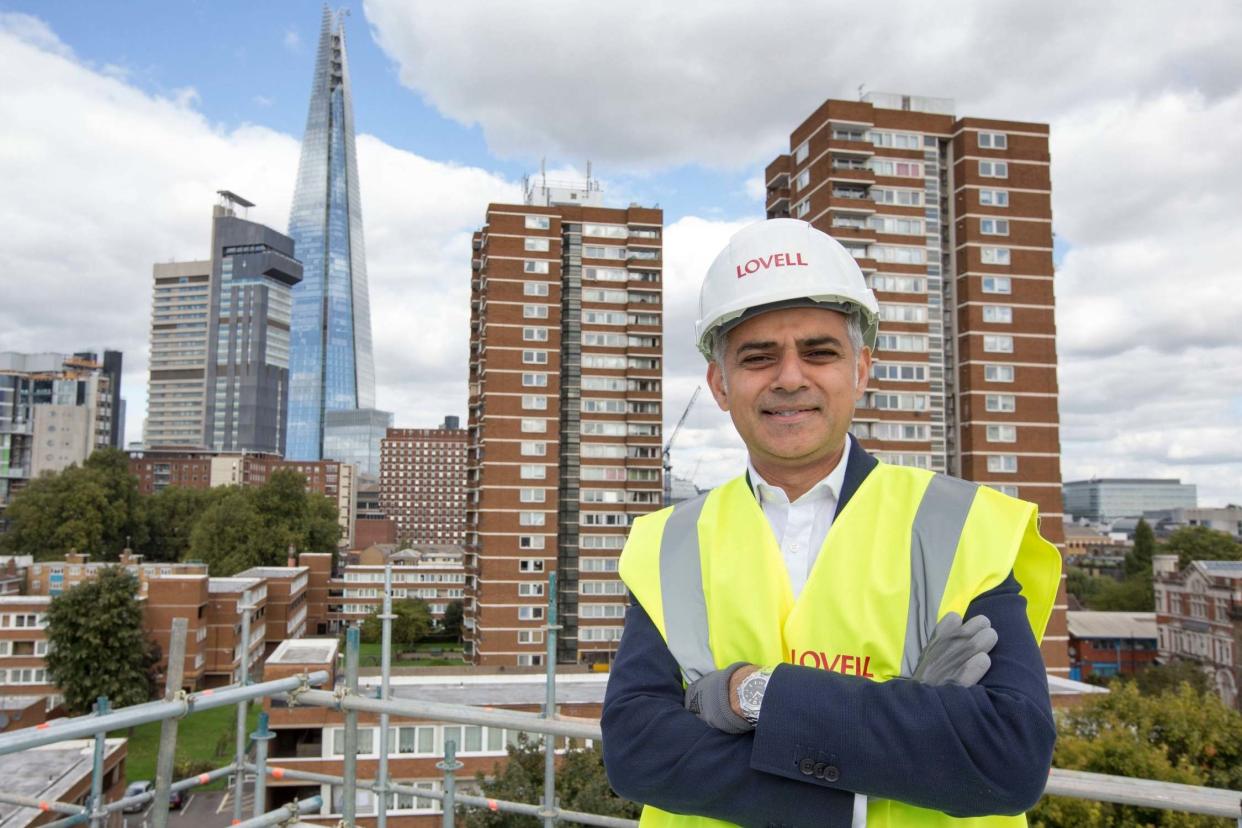Free up public-sector land and we can solve London’s housing crisis

Have I ever told you about the time I lived in a tiny rented flat above the Scientology shop on Tottenham Court Road? It was comically grim. By day, the whole apartment reeked of fried chicken thanks to the KFC diagonally below us, and at night I couldn’t ever really sleep because there was a streetlamp inches away from my bedroom window.
My flatmates and I got to know the Scientologists pretty well (they used to give out free coffee and soup), and I’m pleased to report that we got to the point where they thought we were the weird ones, which is quite an achievement when you’re dealing with a cult that believes in an alien warlord called Xenu.
That’s not the only terrible place I’ve rented in London over the years. There was the house we got kicked out of after just a few months because the owners decided to sell, which was a terrible upheaval. And I’ll never forget the damp basement flat that always had huge slugs in the shower, no matter how many you’d picked out of there the day before.
All in all, I lived in rented accommodation in London for a decade and half — from the moment I moved here in my early twenties, until last year, when I finally managed to buy a flat of my own.
I was 37 by the time I clambered on to the housing ladder, which is pretty average for first-time buyers these days — but it felt like a really big moment, as one of the main reasons I’d quit my job in David Cameron’s Downing Street team (which I loved) a few years before was because I thought I’d never be able to scrape enough money together for a deposit if I kept working in the public sector.

The one consolation about London’s housing crisis is that the scale of the problem means you’re never suffering alone.
Unless you’re lucky enough to get help from relatives (which I didn’t), buying your own place in the capital is increasingly out of reach — and renting is excruciatingly expensive too.
The main cause, as everyone knows, is that we’re not building enough housing — meaning that supply is outstripping demand, causing property prices and rents to spiral upwards.
Here are the facts, from the housing charity Shelter. “Years of undersupply have left a backlog of housing need, manifested in concealed households, rising overcrowding, homelessness and the rise in young adults living with their parents. The most recent estimates suggest the backlog may be as large as two million households. To clear this, England would need to build well over 250,000 homes each year for many years.”
Read more
Why house prices in these London areas look set to resist Brexit chaos
Sadly, we’re building far fewer than that — and London is doing especially badly, with the number of new homes being built here rising at a slower rate than any other region.
So what can be done about it? This is one of those areas where the market acting alone can’t fix things, and the same goes for government.
The only solution will involve both entrepreneurs and public-sector bodies being freed up to build more housing — with each side delivering what it’s best placed to do.
Let’s start with the public sector. In the middle of the 20th century, local councils were building almost half of all new homes — and since they stopped, we’ve always had a housing shortage.
To get back to those volumes, we have to get rid of the outdated central government rules that largely prevent local authorities from borrowing to fund council housing. Without this freedom, we’ll never have enough council housing to meet demand.
"It’s an absolute nightmare trying to build new homes in London. Local-council rules are endlessly shifting"
And the public sector can do more than build council houses — it can also support innovative models such as Community Land Trusts (CLTs), which my wife, Kate, spent years campaigning for, alongside the brilliant team from Citizens UK.
CLTs are straightforward enough. When you buy a CLT home, you’re paying only for the bricks and mortar, which makes it much cheaper than a traditional property — and the land underneath is held in a trust on behalf of the community as a whole. What’s really clever is that the value of a CLT home is always pegged to local incomes, so home ownership becomes permanently affordable.
The only thing stopping CLTs from popping up everywhere is the availability of land, which is why it’s such a shame that Transport for London has been flogging its sprawling portfolio to developers — rather than using it for CLTs. Far better would be a simple rule that if public-sector land is no longer needed, the default assumption is that it gets handed to a CLT, rather than sold off. That way we’ll get more housing for low income families — in perpetuity.
Read more
London house prices: average asking prices drop by £13k in one month
As for the private sector, that’s the (relatively) easy bit. For the past few years I’ve been in the weird position of being unable to afford a flat in London, and yet — via my business Second Home — involved in various projects to build new housing in the city.
Here’s what I’ve learned firsthand: it’s an absolute nightmare trying to build new homes in London. Local-council rules are endlessly shifting, arbitrary and contestable — meaning developers end up paying former planning officials to lobby for more favourable decisions. Even on a relatively small scheme, getting planning approval can take years and cost millions — pushing up the price of new homes. This has got to change, or else the housing shortage will continue for decades to come.
If councils across London were given the firepower to build council housing at scale, while entrepreneurs were set free to build far more quickly, our city would be a vastly more liveable and affordable place. I don’t know about you, but I reckon that’s worth fighting for.
Read more
Read more Why house prices in these London areas look set to resist Brexit chaos

 Yahoo News
Yahoo News 


